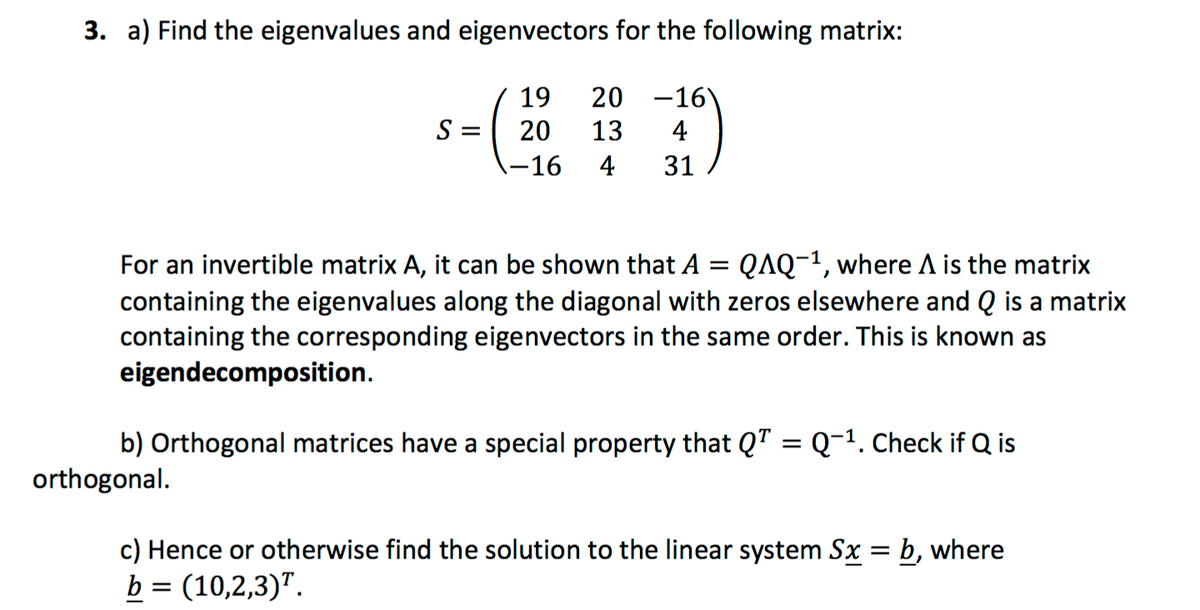19 20 -16 S = 20 13 4 4 31 For an invertible matrix A, it can be shown that A = QAQ-1, where A is the matrix containing the eigenvalues along the diagonal with zeros elsewhere and Q is a matrix containing the corresponding eigenvectors in the same order. This is known as eigendecomposition. b) Orthogonal matrices have a special property that QT = Q-1. Check if Q is rthogonal. c) Hence or otherwise find the solution to the linear system Sx = b, where b = (10,2,3)".
19 20 -16 S = 20 13 4 4 31 For an invertible matrix A, it can be shown that A = QAQ-1, where A is the matrix containing the eigenvalues along the diagonal with zeros elsewhere and Q is a matrix containing the corresponding eigenvectors in the same order. This is known as eigendecomposition. b) Orthogonal matrices have a special property that QT = Q-1. Check if Q is rthogonal. c) Hence or otherwise find the solution to the linear system Sx = b, where b = (10,2,3)".
Elementary Linear Algebra (MindTap Course List)
8th Edition
ISBN:9781305658004
Author:Ron Larson
Publisher:Ron Larson
Chapter7: Eigenvalues And Eigenvectors
Section7.2: Diagonalization
Problem 32E
Related questions
Question

Transcribed Image Text:3. a) Find the eigenvalues and eigenvectors for the following matrix:
19
20 -16)
S =
20
13
4
-16
4
31
For an invertible matrix A, it can be shown that A = QAQ-1, where A is the matrix
containing the eigenvalues along the diagonal with zeros elsewhere and Q is a matrix
containing the corresponding eigenvectors in the same order. This is known as
eigendecomposition.
b) Orthogonal matrices have a special property that QT = Q-1. Check if Q is
orthogonal.
c) Hence or otherwise find the solution to the linear system Sx = b, where
b = (10,2,3)".
Expert Solution
This question has been solved!
Explore an expertly crafted, step-by-step solution for a thorough understanding of key concepts.
Step by step
Solved in 2 steps with 1 images

Recommended textbooks for you

Elementary Linear Algebra (MindTap Course List)
Algebra
ISBN:
9781305658004
Author:
Ron Larson
Publisher:
Cengage Learning

Linear Algebra: A Modern Introduction
Algebra
ISBN:
9781285463247
Author:
David Poole
Publisher:
Cengage Learning

Elementary Linear Algebra (MindTap Course List)
Algebra
ISBN:
9781305658004
Author:
Ron Larson
Publisher:
Cengage Learning

Linear Algebra: A Modern Introduction
Algebra
ISBN:
9781285463247
Author:
David Poole
Publisher:
Cengage Learning